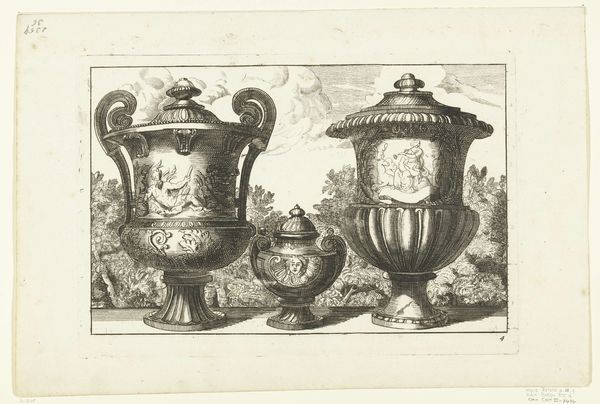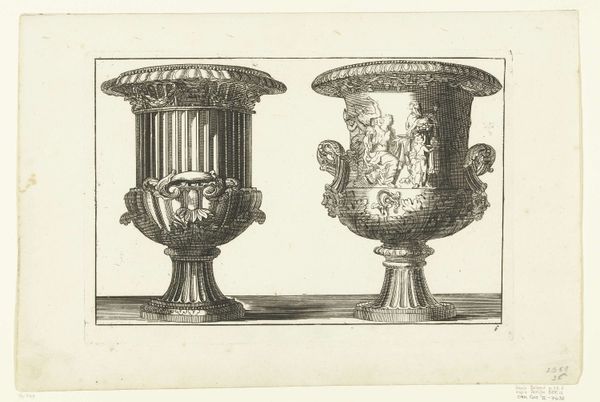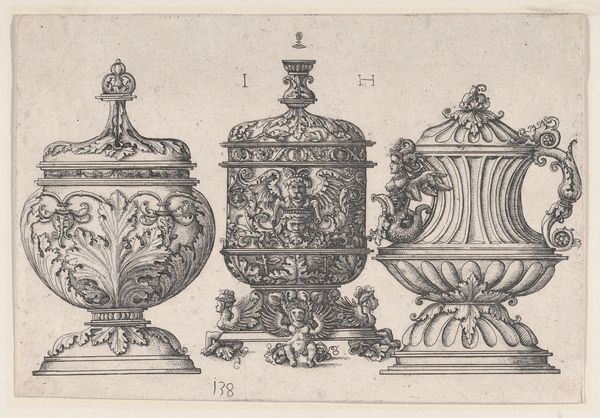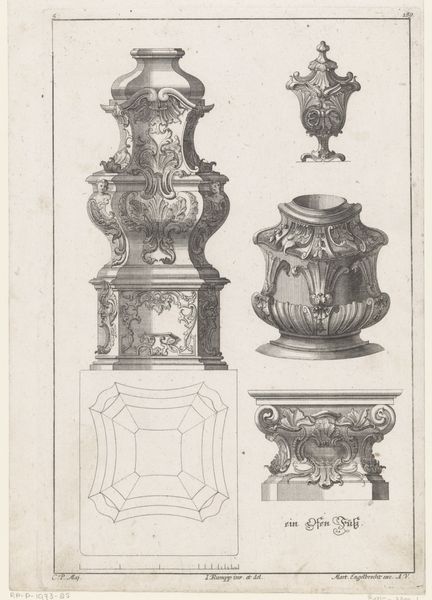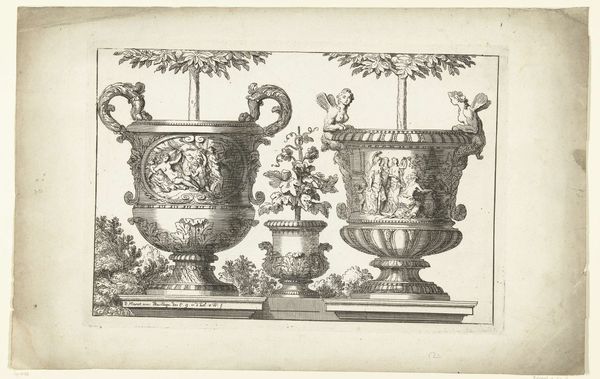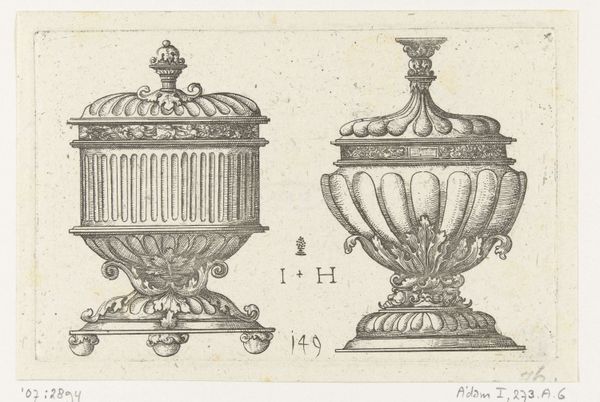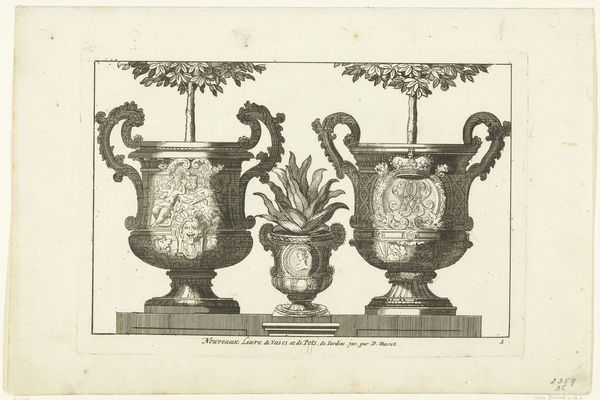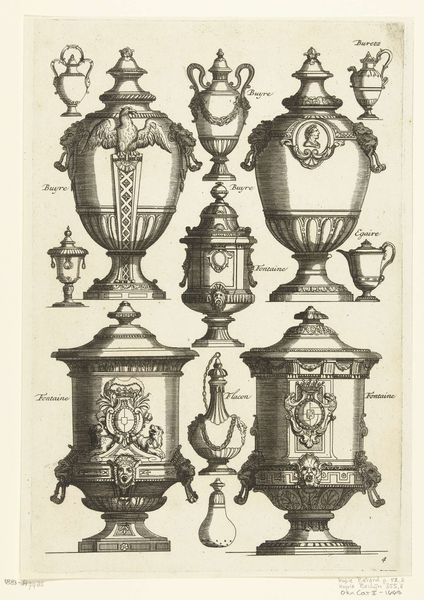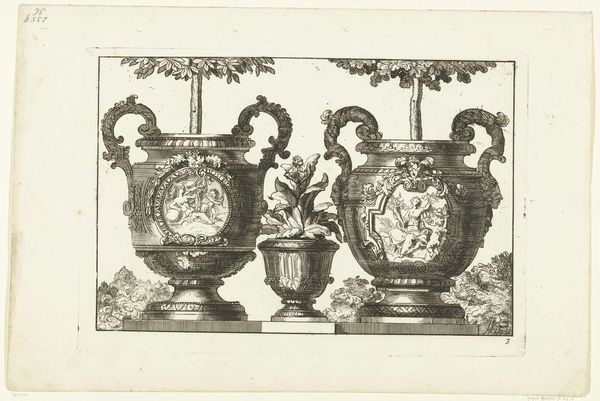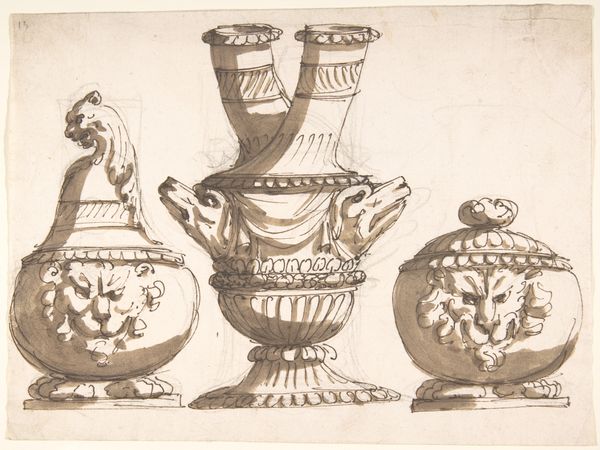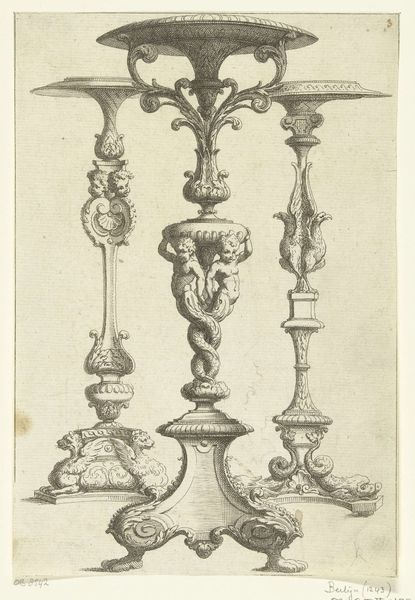
Dimensions: height 186 mm, width 271 mm
Copyright: Rijks Museum: Open Domain
Curator: Before us, we have an engraving from before 1800, attributed to an anonymous artist. The work, held here at the Rijksmuseum, is titled "Twee grote urnen en een kleine urn"—"Two large urns and a small urn." What's your initial read on this piece? Editor: There's a solemn formality, don’t you think? The baroque detail, combined with the monochrome print, speaks of memory, of traditions meticulously observed. Like a stage set for rituals we no longer quite grasp. Curator: The style is definitively baroque, as you point out, which locates it within a very particular socio-political framework. Aristocratic display was, of course, inseparable from the exercise of power at this time. Engravings like this one circulated as models for actual objects, asserting a cultural capital associated with refinement and taste. Editor: Absolutely. The urns themselves – containers for ashes – are so potent as symbols of death and remembrance. Look at the sculpted figures on each; stories frozen in time, but eternally resonant with the cycle of life and mortality. That smaller urn almost feels like a child, a family group memorialized. Curator: I agree; the cultural currency of such displays cannot be overlooked. Commemorative objects reinforced social hierarchies. But what stories do you imagine are represented on them? Do they reference classical allegories that served as a bedrock of values? Editor: Likely, though I'm drawn more to the suggestion of human drama than specifics. The forms almost dissolve into abstraction, the narrative secondary to the impact of a contained human presence. It almost becomes the spirit animating an otherwise inanimate object. Curator: That's a pertinent consideration. Though rendered through what we recognize now as an "old engraving style," there's nonetheless the deliberate intention to link present-day sensibilities to classical or idealized pasts. In short, these were not simply decorative items, but tangible claims on historical and moral authority. Editor: I'll concede you the authority angle. The very symmetry, the idealized figures…these prints sold aspirations as much as urns. For me, the symbolic weight lingers after you stop counting how many dukes had one of these in their gardens. Curator: Agreed. And hopefully we've managed to tease out a few of those complex layers that speak to both artistic intent and its place within the culture of its time. Editor: Indeed, giving us plenty to consider about memory, mortality, and status all bound together within these beautiful containers.
Comments
No comments
Be the first to comment and join the conversation on the ultimate creative platform.
